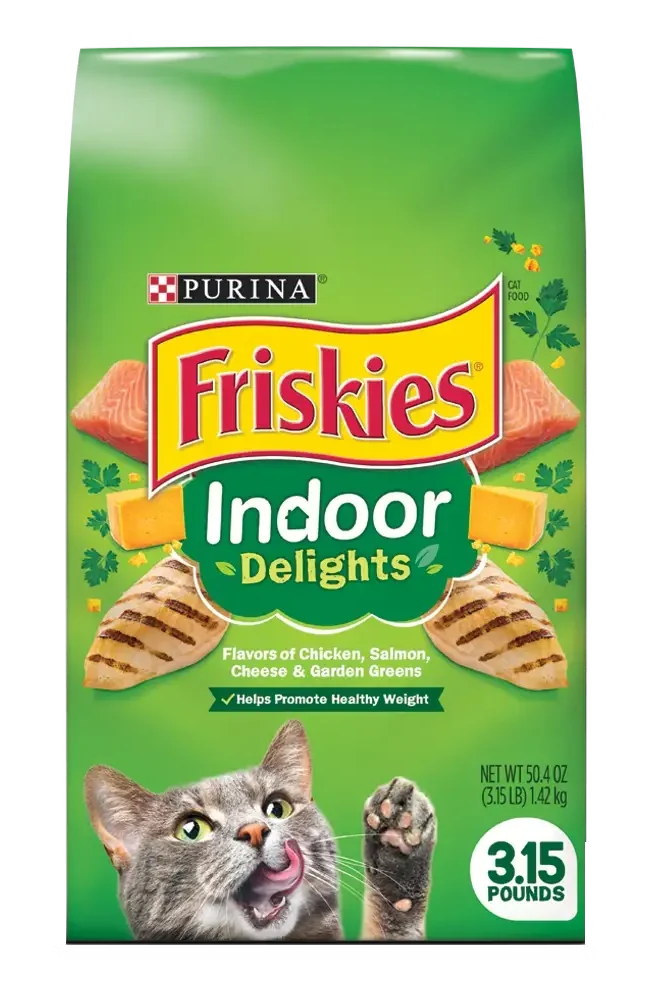Friskies
Indoor Delights with Flavors of Chicken, Salmon, Cheese & Garden Greens
Adult
Regular
Indoor
Click to reveal the score breakdown
Tap to view ingredients, guaranteed analysis and more
Product Summary
Friskies Indoor Delights with Flavors of Chicken, Salmon, Cheese & Garden Greens is designed to meet the nutritional needs of indoor cats. It contains a blend of protein sources such as chicken by-product meal and salmon meal, providing a 30% protein content to support muscle maintenance. The inclusion of garden greens adds fiber to aid digestion, while the flavor variety helps keep cats engaged with their food.
Pros:
- Adequate Protein Level: Offers 30% crude protein from chicken by-product meal and salmon meal, supporting muscle health.
- Fiber Inclusion: Contains garden greens and fiber sources like powdered cellulose to aid in digestion.
- Flavor Variety: Offers multiple flavors including chicken, salmon, and cheese, which can be appealing for picky eaters.
Cons:
- Use of By-Products: The main protein source is chicken by-product meal, which is less optimal compared to whole meat sources.
- Moderate Fat Content: With 9% crude fat, it might not be sufficient for cats needing higher energy intake.
- Artificial Additives: Contains added colors and flavors, which some cat owners may prefer to avoid.
Ingredients
Whole grain corn
Corn protein meal
Chicken by-product meal
Soybean meal
Animal fat preserved with mixed-tocopherols
Powdered cellulose
Meat and bone meal
Soybean hulls
Liver flavor
Salmon meal
and also:
Calcium carbonate, phosphoric acid, salt, natural flavor, choline chloride, parsley flakes, dried cheese powder, taurine
Vitamins and Additives
MINERALS [zinc sulfate, ferrous sulfate, manganese sulfate, copper sulfate, calcium iodate, sodium selenite], potassium chloride, VITAMINS [Vitamin E supplement, niacin
(Vitamin B-3), thiamine mononitrate (Vitamin B-1), calcium pantothenate (Vitamin B-5), riboflavin supplement (Vitamin B-2), Vitamin A supplement, pyridoxine hydrochloride (Vitamin B-6), Vitamin B-12 supplement, folic acid (Vitamin B-9), biotin (Vitamin B-7), Vitamin D-3 supplement, menadione sodium bisulfite complex (Vitamin K)], Vitamin E supplement, L-Tryptophan, Yellow 6, Yellow 5, Red 40, Blue 2.I600223
Comments
Guaranteed Analysis
Crude Protein
30%
Crude Fat
9%
Crude Fiber
5%
Moisture
12%
Crude Ash
7.4%
Calcium
1%
Phosphorus
0.8%
Metabolizable Energy
3382 kcal/kg
Comments
Product last updated: September 19, 2024, 2:35 AM
Please hold on while we’re getting the best offers for you
6879





